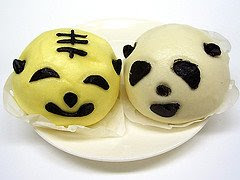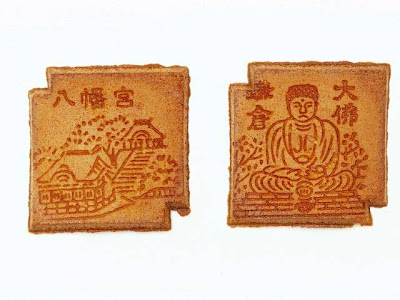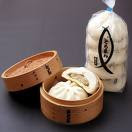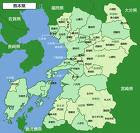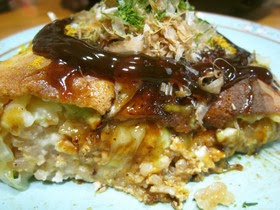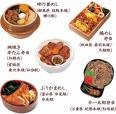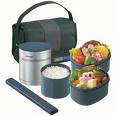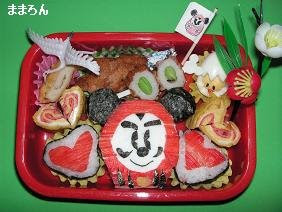[ . BACK to WORLDKIGO TOP . ]
::::::::::::::::::::::::::::::::::::::::::::::::::::::::::::::::::::::::::::::::::::::::::::::::::::
Iwate prefecture 岩手
The Nanbu clan (南部氏, Nanbu-shi, Nambu clan)
was a Japanese samurai clan originating in northern Japan, specifically Mutsu Province (the northeast coast of Honshū). The Nanbu claimed descent from the Minamoto clan, and its members first enter the historical record as residents of Kai Province during the Kamakura period. The clan later moved to Mutsu.
In the Sengoku period, the clan frequently clashed with its neighbors, including the Tsugaru clan, one of its branches which declared independence. The Nanbu clan was on the winning side of the Battle of Sekigahara, and entered the Edo period as the lordly (daimyo) family of the
Morioka Domain. Over the course of the Edo period, several branch families were established, each of which received its own fief.
© More in the WIKIPEDIA !
Tono (Toono) 遠野 is an area where old legends abound.
. Tōno monogatari 遠野物語 Legends of Tono .
In the plain arount Tono most of the hopp of Japan is grown and harvested before September, when the taifun season starts. It has a good bitterness for making beer.
岩手県遠野産ホップ
CLICK here for PHOTOS !
Hopfen Anbau in Tono, Iwate. Bier.
:::::::::::::::::::::::::::::::::::::::::::::::::::::::::::::::::::::::::::::::::::::::::::::::::::::
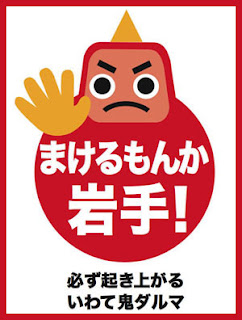 . Japan after the BIG earthquake -
. Japan after the BIG earthquake -
March 11, 2011
 source : tohoku-umaimon
source : tohoku-umaimon
Grandaruma
うまいもん市場 Local Market
:::::::::::::::::::::::::::::::::::::::::::::::::::::::::::::::::::::::::::::::::::::::::::::::::::::
Capital of Noodles, Morioka 盛岡
The taste and the type of noodles vary in each place or city but the residents who consume the most amount of noodles is Morioka City. Ramen noodle is very popular but Morioka has the famoust "Wanko Soba" made from buckwheat. "Morioka Remen" is based on the cold noodles that orinate in Korean Peninsula. Jajamen noodles has the roots in China. The Moriokans (how we call the local people in Morioka) are keen to find the best tasting noodles of any kind. All the type of noodles are scattered in the city and each restaurant takes pride with their own recipe and serve them in affordable pricings.
three major kinds (Morioka Remen, Wanko soba and Jajamen)
source : www.kanko-otakara.jp
Nanbutestu 南部鉄 iron teapots and other items
. . . CLICK here for Photos !
hatto ばっと is a local word for noodles.
:::::::::::::::::::::::::::::::::::::::::::::::::::::::::::::::::::::::::::::::::::::::::::::::::::
azukibatto, azuki hatto 小豆ばっと (あずきばっと)
udon noodles in
shiruko sweet bean soup
The noodles can be made from buckwheat or wheat flour. Hatto are a kind of flat noodles.
. . . CLICK here for Photos !
.......................................................................
Beef from Iwate ( Maesawa Beef, etc. )
The most famous beef in Iwate is Maesawa Beef produced in the Maesawa area of Oshu City. It is said that the Matsusaka Beef in the West and the Maesawa Beef in the East are the best beef brands in Japan. The exquisitely marbled meat is so soft that it melts in your mouth. To ensure its quality, Maesawa Beef is only available at stores or restaurants which are designated as official distributors. The Maesawa Beef Festival, held on the first Sunday of June, is a great time to enjoy this high-end delicacy at a bargain price; over 30,000 visitors from in and out of Iwate flock to this event. To get beef at the festival, buy a beef-exchange ticket in advance.
Another great Iwate Beef is Iwate Short-Horn Beef, which is lean and healthy.
The cattle are raised on highland pastures, and in summer, many tourists enjoy the panorama of the relaxed cows, the lush green grass, and the blue sky. In Iwate, there area many restaurants where you can enjoy great Iwate Beef such as these, in various dishes such as steak, sukiyaki, and shabu-shabu.
- source : www.japan-iwate.info
.......................................................................
beer from Tono 遠野市 hopp
made by Kirin in October 2014
キリンビールは2014年10月28日、ホップの産地として有名な岩手県遠野市で夏に収穫したばかりのホップをぜいたくに使用した「一番搾り とれたてホップ生ビール」
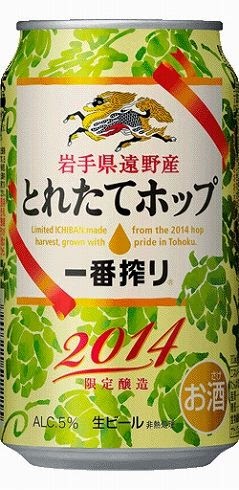 source : www.kirin.co.jp/company
source : www.kirin.co.jp/company
.......................................................................
ebimochi えびもち 海老餅 shrimp
mochi rice cakes
Prepared for festivals and celebrations.
But also on normal evenings.
Shrimp (numa ebi) from the many sweetwater ponds are collected, often in autumn and roasted as they are, then falvored with rice wine and salt and soy sauce. Freshly pounded mochi are torn by hand and mixed with these shrimp. The red and white color combination is auspicious.
. . . CLICK here for Photos !
Mochi Dishes ( cooked sticky rice )
( Ichinoseki City, Hiraizumi Town, Shiwa Town, etc. )
Mochi, or “rice cake,” is made of steamed and pounded rice. It is a New Year delicacy, served in a traditional soup called zoni, or wrapped in nori seaweed with soy sauce. Popular sweet mochi are kinako mochi and azuki mochi, covered with sweetened soybean flour and red bean paste, respectively. Other variations contain ingredients such as crushed walnuts, sesame, and natto ( fermented soy bean ) .
Mochi is extremely sticky and stretchy, so be careful not to choke on it.

There is
a unique “mochi culture” in southern Iwate, where mochi is eaten at various special events. There are even “mochi songs” which are sung while pounding mochi. There are over 300 variations, such as zunda mochi with green soybean paste, ebi mochi with shrimp, and fusube mochi with chili peppers. In the Ichinoseki area, there was a special full-course mochi menu called Mochi Honzen, served at weddings and funerals. Today, mochi shops and restaurants in Ichinoseki and Hiraizumi have joined to form “Ichinoseki-Hiraizumi Mochi Road” to promote the mochi culture, offering traditional menus as well as new recipes.
- source : www.japan-iwate.info
.......................................................................
enohana gohan えのはなごはん mushroom soup
enohana, bakuroo ばくろう/ 香茸 is a musroom of the area.
It gets a good smell after drying. After watering again the mushroom is slightly fired together with carrots and
abura-age tofu, some soy sauce added before placint it on the rice.
ganzuki がんづき (雁月) "goose in the full moon" dumplings
ganzuki bread.
Sometimes made sweet with black sugar.
The name of this steamed bread, ganzuki, means "goose moon," and apparently was inspired by the sight of a flock of geese flying in the night sky. This is a very popular snack to serve with green tea in Iwate prefecture.
. . . CLICK here for Photos !
.......................................................................
“Harako” is Iwate's dialect for salmon roe.
harako soba はらこそば buckwheat noodles
The roe with eggs from the hanamagari salmon is disentangled and put on hot buckwheat soup. Eaten with leek and
momiji oroshi radish with carrots.
harakomeshi はらこ飯
Harakomeshi, or salmon roe on white rice, is a simple yet delicious dish; when you take a bite, the soy-sauce flavored roe pops and its mild flavor spreads in your mouth. Before the days of refrigerators and freezers, salmon roe was soaked in soy sauce and sake for the purpose of preservation. But with today's refrigeration technology, restaurants can focus on the taste; if the roe is too salty, it does not go well with warm white rice, so each restaurant seeks a perfect balance of the roe and the rice, and serves what they find is best.
When salmon sashimi is added, it is called Sake Oyako-don ( Salmon Parent and Child Rice Bowl ) or Sake Ikura-don ( Salmon and Salmon Roe Rice Bowl ) . In Iwate, you can also find Harako Soba, in which salmon roe is placed on soba noodles instead of white rice.
- source : www.japan-iwate.info
.......................................................................
Hatto-nabe from Nambu
This is a relatively new noodle dish which uses many of Iwate's specialties.
“Hatto” refers to noodles made of flour. It is a udon noodle dish with plenty of other wholesome ingredients such as cod, soft roe of cod, scallops, shrimp, oysters, mushrooms, and vegetables of the season. The soup is seafood-based with a touch of soy sauce. The nabe used is a Nanbu Cast Iron pot.
Most restaurants serve Nanbu Hatto-nabe in fall and winter, for about 3,500 yen. In most cases you need a reservation, but some restaurants serve the dish throughout the year without a reservation.
- source : www.japan-iwate.info
.......................................................................
hittsumi ひっつみ vegetable soup with handcut noodles
with chicken meat, carrots, goboo, shiitake and leek. The dough is pleated by hand, and cropped to bitesize pieces, which gives the sound
hittsu hittsu ... hence the name.
hittsumijiru ひっつみ汁 hittsumi shiru
Keeps the body warm on long winter nights.
From Hachinohe town 八戸.
Hachinohe Ekiben 八戸 駅長弁当 serves this too in a special container.
. . . CLICK here for Photos !
Hittsumi is one of the most representative local dishes of Iwate. It was designated in 2007 as one of the 100 Local Dishes of Japan. Dough made of flour and water is flattened and pulled off into small pieces, which are cooked in soy sauce broth with chicken, carrot, mushrooms, green onion, burdock root, etc. In most areas, the soup is chicken-based, though other ingredients such as dried sardines and canned mackerels are also used in some areas. It is usually served in winter. If you want to make hittsumi from scratch, a special hittsumi flour made by a local company is available; you can also buy fresh or dry pre-made hittsumi.
- source : www.japan-iwate.info
.......................................................................
ichigoni, ichigo-ni いちご煮 seafood soup with
uni and abalone
Originally prepared by the fishermen of Northern Japan directly on the beaches. When uni is placed in boiling water, it takes on a round form like a wild strawberry, hence the name "strawberry stew".
Ichigoni is a traditional dish in the northern coastal area of Iwate.
It is a simple soup dish with sea urchin and sliced abalone, flavored with salt and soy sauce. The name “Ichigoni” means “Boiled Strawberries.” Of course there are no strawberries in the soup; it is named thus because the sea urchin floating in the soup is said to resemble wild strawberries in the morning dew. Today, Ichigoni is available in cans for easy cooking even if it is a bit expensive. You can simply warm it in a pan, or cook rice with it. Try adding a bit of mitsuba ( honeywort ) before eating to make it even more delicious.
- source : www.japan-iwate.info
.......................................................................
imonoko jiru いものこ汁 Taro soup
often prepared at outdoor camps in autumn, sometimes in large pots.
. . . CLICK here for Photos !
.......................................................................
Iso Ramen ( seafood noodles )
Iso Ramen is a popular noodle dish in the coastal areas of Iwate.
The soup is made of seafood broth and salt or soy sauce; there are many fresh toppings from the Sanriku Coast such as various seaweeds, crab, shrimp, scallops, mussels, squid, etc. Each restaurant serves different toppings, and prices vary as well.
Whether you choose a simple version or a more sumptuous one, you can enjoy the taste of the Sanriku Coast to its fullest with Iso Ramen.
- source : www.japan-iwate.info
.......................................................................
jajamen, jaja men じゃじゃ麺 (じゃじゃめん)
With toppings of sliced cucumbers, green onions or fried soybean paste, which are placed on the noodles, stirred and eaten. There is no soup for this noodle dish.
. . . CLICK here for Photos !
Morioka Jajamen Noodles
is one of one of the “Three Great Noodles of Morioka,” along with Wanko Soba and Reimen. Jajamen was developed from a Chinese noodle dish called “jia jiang mein.” The noodles are similar to udon, but are served with special meat-miso sauce, cucumber, and green onion. You can also add grated ginger, garlic, vinegar, and/or hot pepper oil. Mix all the ingredients well. After finishing the noodles, you can also try Chi-tan-tan, or soup with the meat-miso sauce, the hot water in which the noodles were boiled, and beaten egg. There are many Jajamen restaurants in Morioka; in particular, the oldest Jajamen restaurant in the city usually has a line of people waiting outside. Some restaurants will also ship their Jajamen noodles and miso upon request.
- source : www.japan-iwate.info/app
.......................................................................
Jingisukan ( Tono City, Hachimantai City, and Shizukuishi Town )
Jingisukan or Genghis Khan, named after the Mongolian ruler, is a popular barbecue dish, especially in Tono, Hachimantai, and Shizukuishi, made with mutton or lamb grilled on a dome-shaped griddle. Despite its name, it is a Japanese dish not a Mongolian dish; named so since Japanese people commonly associated sheep with Mongolia.
In
Tono, a unique cooking gadget is used: a jingisukan bucket. It is an ordinary tin bucket with vent holes on its side; the fuel is placed inside, and the griddle is placed over it. In Tono, jingisukan buckets are sold at local hardware stores; they can also be rented at local meat shops.
Lamb and mutton are extremely nutritious. They are rich in iron and vitamin B. They contain little fat but 3 to 10 times as much carnitine as other types of meat, which helps burn fat. They are also said to lower cholesterol. There are many jingisukan restaurants in Iwate, especially in Tono, Hachimantai, and Shizukuishi; jingisukan is also served at the Iwate Snow Festival and at various cherry blossom viewing events.
- source : www.japan-iwate.info/app
.......................................................................
Kakko Dango ( Ichinoseki City )
Gembikei is famous for its dango, or sweet rice dumpling. The most famous dango shop is Kakkoya, established in 1878, renown for its Kakko Dango or “Flying Dango.” Place your money in the basket hanging on a cable over the river and knock on the board to signal the store on the other side of the river; the basket is pulled to the store and sent flying back with dango and tea inside. Three types of dango are available: an ( red bean ) , goma ( sesame ) , and mitarashi ( sweet soy sauce syrup ) . Tricolor dango of zunda ( sweet green bean paste ) , kurumi ( walnut ) , and mitarashi ( sweet soy sauce syrup ) are also available. A red flag by the store signals that all the dango are sold out for the day.
The name “
Kakkoya,” which means “Cuckoo's Store,” came from its founder who was good at imitating the call of a cuckoo. The store is in a traditional Japanese building with a great view of Gembikei and a Japanese garden. The seats by the window are perfect for cooling down after a walk along the gorge, or to enjoy the beautiful fall colors.
- source : www.japan-iwate.info/app
.......................................................................
kamasu mochi, kamasumochi かますもち dumplings with
kamasu fish
From the Northern area. Made from wheat flour. Little pouches are filled with the boiled fish and vegetables. Miso paste can be added.
kanenari かねなり dumplings "to get rich"
Made from uruchimai rice and fried in soy sauce. In the form of
koban 小判, old gold money, hence the name. Speciality of the Tono area 遠野名物.
. . . CLICK here for Photos !
matsumo 松藻 kind of hornwort
. . . CLICK here for Photos !
Nambu hanamagari 南部鼻曲がり dried salmon "with a bent nose"
. . . CLICK here for Photos !
Nanbu senbei, Nambu senbei 南部せんべい rice crackers from Morioka
.......................................................................
Noda no Shio のだ塩 Salt from Noda village
made in traditional fashion, by boiling sea water in large ovens.
 source : www.noda-kanko.com
source : www.noda-kanko.com
.......................................................................
Pork Brands
There are 30 brand-pork breeds in Iwate, which has a perfect natural environment for pig farming. Each brand boasts unique features such as special feed or environment. Pork is a healthy meat rich in Vitamin B1. Many of the brands are served at restaurants throughout Iwate.
Oritsume Sangenton Sasuke
The pigs are raised on a farm on Mt. Oritsumedake in Ninohe. Vegetable carbides from a 3- million-year-old geological stratum are added to non-GM feed, which make the meat mild, tender, and succulent.
Platinum Pork
The pigs are raised on a farm surrounded by the Ou Mountains in Hanamaki. The pigs drink excellent spring water from the mountains which is further purified using minerals from Kamaishi; this makes the meat superbly tender and mild.
Tochucha Pork ( Eucommia Leaf Pork )
Eucommia, originally from China and used as tea leaves, are also grown in Hachimantai City, Iwate. The leaves are fed to the pigs to make the meat tender and the fat mild.
- source : www.japan-iwate.info/app
.......................................................................
ocha mochi お茶もち "tea
mochi" rice dumplings
made from rice flour, round dumplings are flattened and put on skewers. They used to be called
uchiwa mochi (handfan mochi), the pronounciation changed then to
ujamochi うじゃもち ... ocha mochi.
. . . CLICK here for Photos !
.......................................................................
reimen れいめん cold noodles
Origianlly from Korea.
Noodles made of wheat flour and starch.
Toppings of slices of pork or boiled egg, also fresh vegetables like carrots, spring onion or water melons. On top of all, a spoonfull of kimchi.
. . . CLICK here for Photos !
Morioka Reimen is one of the “Three Great Noodles of Morioka,”
along with Wanko Soba and Jajamen. Reimen is originally a Korean dish; Morioka Reimen Noodles was first served in 1954 by a yakiniku restaurant owner from Korea. The most unique characteristic of Morioka Reimen Noodles is the rubbery texture of the noodles, which are served in a cold soup with beef, kimchi, cucumber, boiled egg, and a piece of fruit such as apple, pear, or watermelon.
The fruit helps soothe your mouth if the soup is too spicy. You can usually choose from three levels of spiciness; if you are not sure which level to get, you should go for “betsukara,” which means the kimchi which is added to the soup is served separately so that you can adjust the spiciness yourself.
You can try Morioka Reimen Noodles at basically any yakiniku restaurant in Morioka.
- source : www.japan-iwate.info/app
.......................................................................
sansai 山菜 ( Wild Edible Plants )
Wild edible plants can be gathered on mountains throughout Iwate in spring. They are available only for a limited time and are considered seasonal delicacies of the spring. Japanese restaurants serve a variety of sansai dishes such as sansai tempura and aemono ( dressed with various condiments such as miso, sesame, or vinegar ) .
Today, some sansai are grown on farms or imported, but natural sansai are the best and most nutritious. Some of the most popular wild edible plants are: fukinoto ( Japanese butterbur flower-bud ) , warabi ( bracken ) , and zenmai ( Japanese royal fern ) . Sansai tend to be a little bitter so they are not very popular with children, but are delicacies to most adults.
- source : www.japan-iwate.info
.......................................................................
uchiwamochi, uchiwa mochi うちわもち (うちわ餅) dumplings made of buckwheat flour, shaped like an
uchiwa handfan, put on skewers, see
ocha mochi
. . . CLICK here for Photos !
.......................................................................
Yama-budo Products ( mountain grapes )
Yama-budo juice is a traditional and healthy drink which has always been popular in Iwate. With 8 times as much polyphenol, 3 times as much iron, and 4 times as much vitamin C as grapes, yama-budo juice is considered a great pick-me-up. There are many Yama-budo Products such as wine, juice, and jam.
You can drink the juice in shots, or mixed with soda water. Other newer products include vinegar, jello, ice cream, and cheesecake. In fall, you can also buy fresh yama-budo at local farmers' markets.
- source : www.japan-iwate.info
:::::::::::::::::::::::::::::::::::::::::::::::::::::::::::::::::::::::::::::::::::::::::::::::::::::::
wankosoba わんこそば (わんこ蕎麦 / (椀こそば) Morioka, buckwheat noodles
Small servings of soba, served "all you can eat" and as fast as you can eat. How many can you gulp down in xx minutes?
. . . CLICK here for Photos !
These noodles are also served in Hanamaki town 花巻市 and competitions are held there.
Hanamaki Clay Dolls and Daruma
Hanamaki Tsuchi ningyoo 花巻人形

CLICK for more photos !
「そばっち」 Sobatchi Mascot of Wankosoba, Iwate
- quote
Wanko Soba (わんこそば) is a style of Japanese soba noodles originating from Iwate Prefecture in Japan, particularly Morioka and Hanamaki. It consists of a small serving of soba noodles in a small bowl.
 The name Wanko
The name Wanko comes from the regional dialect of the Iwate Prefecture from which it comes, meaning "bowl", but more specifically, a small, wooden Japanese soup bowl.] There are many theories about the origin of the dish itself however.
(1) One such origin is of a landowner who was having a festival on his land. There was a crowd of over 100 villagers and guests who customarily ate soba at festivals. However, there were so many people to feed but the pots in which the soba were to be made were very small. The soba noodles were spread around in reduced quantities so that there would be enough for everyone.
(2)
Nanbu Toshinao, a territorial lord of the Nanbu area, came and stopped at a house in Hanamaki asking for a meal. His retainers served him a local variety of soba in a small soup bowl. Thinking they served Nanbu Toshinao something too rustic and without much flavor, they were afraid of his reaction. But Nanbu Toshinao thought it was delicious, and ordered more servings. This is said to have established the tradition of hosts continuing to serve small bowls until their guest was satisfied.
There are many stories of how the dish came to be, but these two are the most common. However, the term "Wanko" did not come about until after World War II, some repudiate the stories.
In December 1957 in Hanamaki, the Wanko Winter Sumo Place put on an exhibit in which participants from many countries contested to see who could eat the most bowls of wanko soba.
-
Nanbu Toshinao 南部利直 (1576 - 1632)
was born at Tago Castle, in Sannohe, the eldest son of Nanbu Nobunao. In 1599 he succeeded his newly deceased father as head of the Nanbu clan. After Toyotomi Hideyoshi's death, he improved his ties with Tokugawa Ieyasu. He took part in the Sekigahara Campaign, and was recognized by Ieyasu as lord of Morioka. Toshinao also took part in the Siege of Osaka in 1614.
Toshinao was also responsible for improving mining operations within the Morioka domain.
© More in the WIKIPEDIA !
- quote
Wanko Soba Noodles
Buckwheat noodles (soba) are served up as a lively eating contest. This local favorite began almost four centuries ago as an efficient way to provide guests with “all-you-can-eat” noodles, and continues today as one of Iwate’s most famous food experiences. Count your bite-sized bowls as you down them, but beware! Slide the lid on your bowl quickly when you’re done, or one of the servers will slide in a new portion for you to eat.

Wanko Soba Noodles is served with various condiments, such as: tuna sashimi; nameko, mushrooms with a slightly gelatinous coating, simmered in soy sauce; daikon radish pickled in miso with crushed walnuts; harako, or salmon roe. Sometimes people forget about the contest and take their time to enjoy the delicious soba and the condiments. Some restaurants offer a set menu of condiments and several bowls of soba, for those who opt not to eat them contest-style. In Iwate, there are many soba restaurants, each with different soba, condiments, and dipping sauce. A reservation is often required for Wanko Soba Noodles, so check before going to a soba restaurant.
- source : www.japan-iwate.info
- - - - -
wanko kyoodai わんこきょうだい the Wanko Brothers

They are names of local dishes ending with -tchi
そばっち
Sobatchi from Morioka
とふっち
Tofutchi from 盛岡・八幡平・県央エリア Central Iwate
おもっち
Omotchi from 平泉・花巻・遠野・県南エリア Southern Iwate
うにっち
Unitchi (Wunitchi) from 宮古・釜石・大船渡・沿岸南部エリア The Coast Line
こくっち
Kokutchi from 二戸・久慈・県北エリア Northern Iwate

They became quite popular and are now also available as a bento lunch :
 CLICK for more images !
. Buckwheat plant and food (soba) .
CLICK for more images !
. Buckwheat plant and food (soba) .
:::::::::::::::::::::::::::::::::::::::::::::::::::::::::::::::::::::::::::::::::::::::::::::::::::::::::::::::::::::::::::
Abalone
Sea Urchins
Sushi and Seafood
- source : www.japan-iwate.info/app
:::::::::::::::::::::::::::::::::::::::::::::::::::::::::::::::::::::::::::::::::::::::::::::::::::::::::::::::::::::::::::
Spezialitäten aus Japans Nudelhauptstadt
Morioka gilt als Hauptstadt der Nudeln. Nirgendwo sonst in Japan nämlich werden mehr Nudeln verspeist.
Wankosoba, Reimen und Jajamen – das sind die Nudelsorten, für die Morioka berühmt ist. Wankosoba sind Buchweizennudeln, die klein portioniert in vielen Schalen schnell hintereinander serviert werden. Meistens artet diese rasche Servierfolge in hektisches Wettessen aus.
Die Nudelsorte
Reimen wird indes kalt gegessen. Ursprünglich stammt sie aus Korea. Im Mai des Jahres 1954 eröffnete in Morioka der Koreaner Yang Yong Chul unter dem japanischen Namen Aoki das erste Reimen-Nudelrestaurant »Shokudoo-en«, das inzwischen von seinen Söhnen weitergeführt wird. Das Gericht fand schnell in der ganzen Stadt Verbreitung.
Die Nudeln aus Weizenmehl und Hundsveilchen-Stärke (oder Kartoffelstärke) haben eine besonders feste Konsistenz – »fast wie Gummi«, empfanden die ersten Kunden damals. Für die Suppe lässt man Rinderknochen lange köcheln. Das recht scharfe Gericht wird mit koreanischem Kimchi und einem halben, hart gekochten Ei serviert. Um die Schärfe zu mildern wird als Beilage eine Wassermelonenscheibe oder ein Apfelstück angeboten – manchmal auch beides.
Jajamen-Nudeln
Jajamen-Nudeln haben ihren Ursprung ebenfalls in einem anderen asiatischen Land. Sie zählen mittlerweile jedoch ebenso wie die beiden anderen Nudelarten zur typisch japanischen Küche. Ein Herr Takashina begann die Herstellung dieser Nudeln nach dem Zweiten Weltkrieg. Dabei versuchte er, den Geschmack von einem Nudelgericht nachzuahmen, das er in der Mandschurei gegessen hatte. Der japanische Name für dieses Gericht lehnt sich an den chinesischen Ursprung an: jia jiang mein. Die flachen Weizennudeln werden ohne Suppe mit einer Hackfleisch-Miso-Sauce gegessen, für Frische und Würze sorgen Gurkenscheiben, Schalotten und Ingwer. Nachdem die Nudeln bis auf einen kleinen Rest verzehrt sind, schlagen Kenner ein rohes Ei in den Teller, geben noch etwas Hackfleisch-Miso-Sauce dazu und gießen alles mit heißem Nudelwasser auf. Das ergibt die aromatische Suppe
Chi-Tan-Tan.
Jedes der inzwischen zahlreichen Restaurants kreiert mit einer eigenständigen Sauce und unterschiedlichen Beilagen seine einzigartige, typische Geschmacksvariante.
Die Buchweizennudeln
Wankosoba aus Morioka sind am spektakulärsten. Sie werden in kleinen, mundgerechten Portionen serviert, von denen eine allein kaum satt machen würde. Aber für nicht enden wollenden Nachschub sorgt eine zumeist attraktive Serviererin, die hinter jedem Gast stehend mit dem Ruf »Hai, jan, jan!« flink eine neue Portion in die Essschale füllt. Die leeren Portionsschalen werden auf dem Tisch neben dem Tablett gestapelt und dokumentieren trophäengleich die Anzahl der konsumierten Portionen.
Ist der Gast satt und möchte nicht mehr weiteressen, sollte er rasch einen Deckel auf seine Schale legen. Sonst ist die Serviererin schneller und legt eine nächste Portion nach.
Beste Chancen auf einen Sieg beim Wettessen werden gewahrt, wenn folgende Grundregeln beherzigt werden: Beim Essen darf unbedingt geschlürft werden. Die Suppe sollte am besten gar nicht erst mitgetrunken werden. Möglichst sollte die einmal gewählte Geschmacksvariante beibehalten werden. Und auf gar keinen Fall kauen – einfach hinunterschlucken.
Jedes Jahr finden große Wankosoba-Wettbewerbe in Hanamaki und in Morioka statt. Der Rekord liegt beim Verzehr von respektablen 559 Portionsschalen in 15 Minuten. Wer bei diesen Wettessen die meisten Nudeln gegessen hat, bekommt ein Zertifikat und darf sich Yokozuna nennen – wie ein Sumo-Ringer von höchstem Rang.
Ursprung und Herkunft der Wankosoba-Nudeln sind vom Namen nicht abzuleiten. Denn
wanko bedeutet im Dialekt von Iwate einfach nur »Essschale«. Allerdings existieren Legenden zur Entstehungsgeschichte.
Eine sagenhafte Geschichte beruft sich auf eine Begebenheit in der Edo-Zeit (1600–1868). Bei einer großen Versammlung musste ein Dorfvorstand mehr als 100 Gäste in kürzester Zeit beköstigen. Da kleine Portionen schneller gegart und serviert werden können als große, sollen zu dieser Gelegenheit erstmals Nudeln nach Wankosoba-Art gereicht worden sein.
Eine andere Legende besagt, der Regionalfürst, Nanbu Toshinao, habe bei seiner Durchreise nach Tokyo in der Stadt Hanamaki Station gemacht, um sich zu stärken. Der ehrfürchtige Wirt brachte eine Schale mit Buchweizennudeln, aber nur ein Probierhäppchen. Er wollte den Landesherrn nicht beleidigen, falls der Geschmack nicht genehm sei. Dem Fürsten aber schmeckte es so gut, dass er immer wieder weitere Portionen nachforderte, die selbstverständlich in schneller Folge serviert wurden.
*****************************
Worldwide use
*****************************
Things found on the way
The Koiwai Farm 小岩井
. . . CLICK here for Photos !
Die großen Weiden der Koiwai-Farm bieten mit dem Berg Iwatesan (2041m) als Hintergrund ein Bild ländlichen Friedens und natürlicher Landwirtschaft. Sie liegt nur 12 km nordwestlich der Stadt Morioka.
Im Jahre 1891 begann Inoue Masaru hier mit der Zucht von Holstein, Ayrshire und Brown Swiss Kühen, bald gefolgt von zwei weiteren Landwirten aus der Gegend. 1902 begann dann auch die Pferdezucht und 1962 die Hühnerzucht. 1938 wurde der Name
KO IWA I erfunden, er besteht aus den Initialen der drei Gründer, Ono Gishi (KO), Iwasaki Yanosuke (IWA) und Inoue Masaru (I). 1969 wurden neun der alten Gebäude zu wichtigen nationalen Kulturdenkmalen ernannt (national tangible cultural properties).
Inzwischen werden Milch- und Eierprodukte der Farm in ganz Japan verkauft.
http://www.koiwai.co.jp/english/guide/rekishi.html
*****************************
HAIKU
*****************************
Related words
*****
WASHOKU : Regional Japanese Dishes
March 11, 2011
. Japan - after the BIG earthquake -
:::::::::::::::::::::::::::::::::::::::::::::::::::::::::::::::::::::::::::::::::::::::::::::::::::

